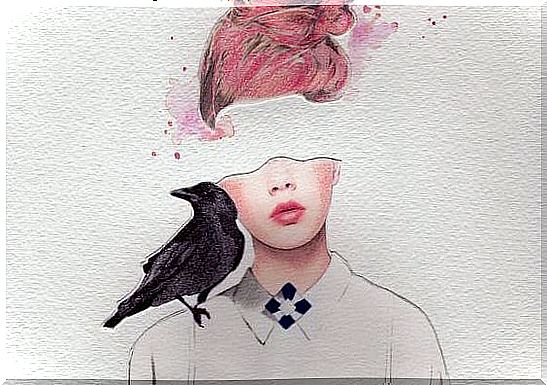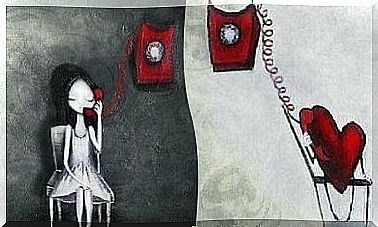The 4 Types Of Interior Dialogues That Are Better To Avoid

We have all been through painful times or unexpected and negative situations that we have had to overcome.
But these types of experiences mark some people so much that they develop a negative inner dialogue.
This dialogue is never recommendable, but it is even less so when it threatens to perpetuate and become a habit.
It is obvious that no one is immune to being faced with a problem that they are unable to solve, whether because of its complexity or because we do not have sufficient tools to find a solution. .
Under these circumstances and if we consider this problem to be important, it is normal for anxiety to appear: the challenge has turned into a threat.
In this type of disorder, it is usual to have inner dialogues that reinforce negative ideas and bring us back to the painful episode that we have not yet been able to overcome.
The worst part is that when faced with each new experience that reminds us of what happened, we begin to react negatively, because we apprehend it as potentially dangerous.
Anticipatory anxiety is the main component of these types of thought dynamics, when they have become established in us.
From this point on, the person develops distorted statements which are repeated constantly and which increase the initial anxiety, until it becomes intolerable.

A dialogue that rises in rank until it alters the state
When we suffer from a state of anguish and anxiety, we tend to develop an inner dialogue of a catastrophic nature.
Of course, this view of life is the product of an emotional state and therefore distorted. The danger that this situation forms, if it is not corrected so much, is that a vicious cycle will arise and worsen over time, which can lead to panic attacks.
The characteristic symptoms of a panic attack include chest pressure, tachycardia, nausea, sweating in the hands, and palpitations.
In biological terms, it is the normal reaction of a mammal to a threat. The person trapped in panic perceives as threatening a situation which he can nevertheless control.
Without realizing it, his inner dialogue reinforces his negative and catastrophic ideas. This is why she loses control and goes into crisis.

The panic attack can escalate and become very severe. However, when we take effective action in the face of the first symptoms, this crisis is blocked and the person comes out of the circle of negative thoughts.
It is possible because the crises involve negative mental dynamics and thus admit modifications if this is the objective.
The classification of interior dialogues
Specialists in the field of psychology have classified into four parts these interior dialogues which operate as detonators of anguish or anxiety.
They are: catastrophic dialogue, self-critical dialogue, victimizing dialogue and self-demanding dialogue.
- Catastrophic dialogue : anxiety arises when imagining the most catastrophic setting possible. We anticipate the facts (which will surely not happen) and we magnify them.
This gives off a misperception, which can trigger a panic attack. The essential phrase of this type of inner dialogue is: “anything can turn into a tragedy when you least expect it”. - Self-critical dialogue : The characteristics of this dialogue involve a permanent state of judgment and negative evaluation of behavior.
He underlines his limits and his faults. It makes life ungovernable. We tend to depend on others and we always compare ourselves, to emphasize a disadvantage.
We envy who achieves their goals and we feel frustrated at being unable to achieve theirs. The favorite phrases of this type of inner dialogue are: “I cannot, I am incapable and I do not deserve it”.
- The victimizing dialogue : this dialogue is characterized by the fact of feeling vulnerable and desperate, which leads to affirm that his condition has no cure, that there is no progress.
We believe that everything will continue in the same way and there are insurmountable obstacles between what we want and what we have.
We complain about the way things work, but we don’t try to change them.
In the victimizing inner dialogue, the following statements take precedence: “nobody understands me, nobody highlights me, I suffer and nobody cares”.

- Self-demanding dialogue : Here, exhaustion and chronic stress are promoted according to an established idea of perfection.
We are intolerant of mistakes and we try to convince ourselves that our mistakes are due to external faults and not to ourselves.
We wear out thinking that we have not achieved our goals because of a lack of money, status etc. instead of being indulgent with others.
The self-demanding person maintains an interior dialogue through this type of sentence: “it is not enough, it is not perfect, everything did not happen as I would have liked etc”.
Take back control
Becoming aware of this type of inner dialogue is a great first step in regaining control and avoiding a negative perception of ourselves and our situation, which ultimately only triggers our state of anxiety.
The real change comes when we start to detect these negative thoughts and replace them with positive affirmations.
It is important to control our breathing, relax, and deal with situations calmly. Otherwise, pessimistic and self-defeating attitudes will continue.
It’s not easy to change these kinds of reactions to what we consider threatening, but it’s exactly the same when we want to change a bad habit, like smoking or eating too much chocolate …
Of course, changing a bad habit takes determination and effort, but ultimately you can do it if you put in enough time and persevere.









